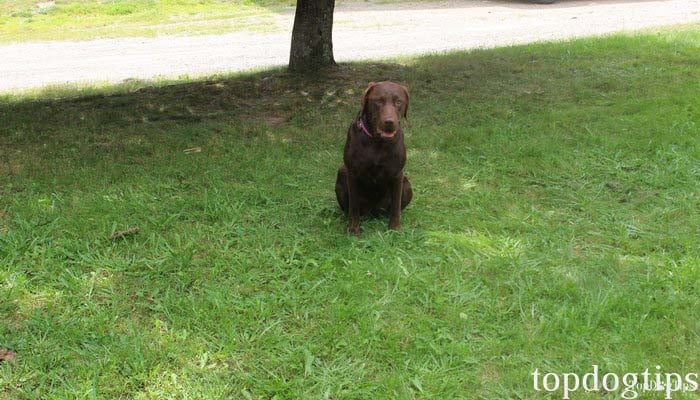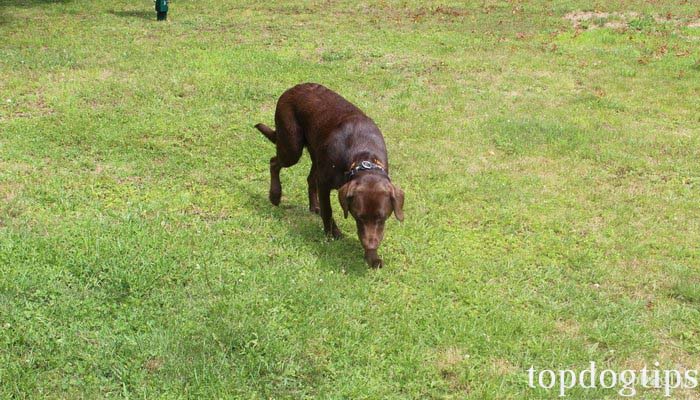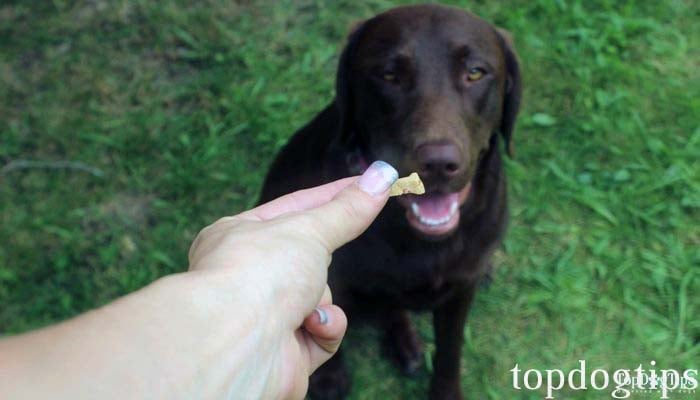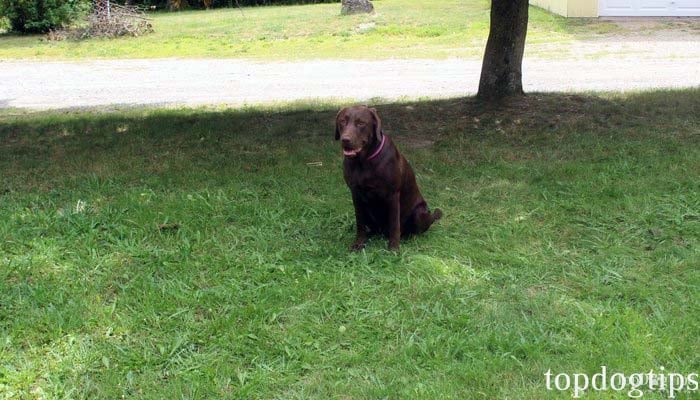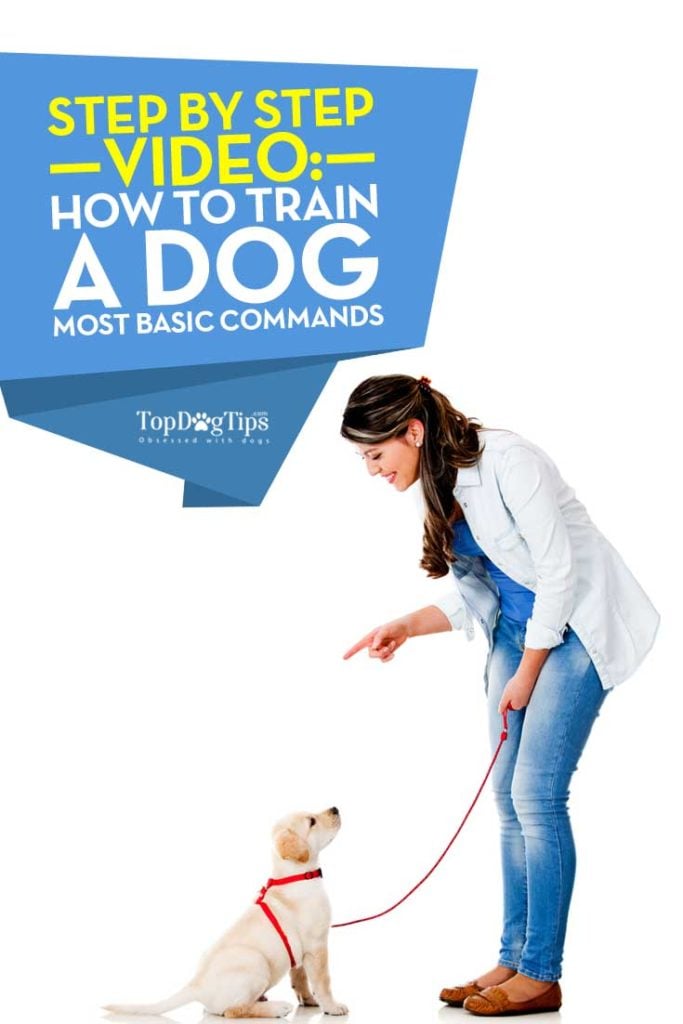Table of Contents
No matter what you're trying to teach a dog, you cannot expect them to be trained overnight.
Learning how to train a dog's basic commands will take time and patience.
You'll need to be consistent with your training efforts and give your dog time to absorb the new information.
Basic Command Training
Basic commands for dogs, including “Sit,” “Stay,” and “Come,” are something that you should teach your pet shortly after you've adopted and brought them into your home.
However, do not rush with dog training the very next day since it's likely to be pointless.
First, your dog needs to know his name (a type of command you use to get the dog's attention).
Then, you also want to give him adequate time to warm up to you, your home, the new environment, your family, and any other pets or kids running around.
Fortunately, training a dog in basic commands won't require too many dog training supplies. While some are useful (a clicker, for example), you can skip most of them if you wish.
The one thing you will need is some healthy training treats that are low in calories.
You need them to motivate and reward the dog.
Also, the dog must be fitted with a collar or harness.
It's also best to have a leash with you if training outdoors, as it may come in handy if your pet proves to be easily distracted or more stubborn than you think.
How to Train a Dog Basic Commands
The Importance of a Dog's Name
If you're sure that your dog knows his name, the first basic command you can start training him is “Come.”
As I explain in my video, using your dog's name as much as possible when you first bring him home is best. This is the very first “command” he learns.
So if you're just getting into it and you've just adopted a dog, use his name whenever you “speak” to him. This will allow him to get used to hearing it and understand that when you say that word.
Sequence of Commands
In my video above, I explain that you need to focus your dog training method on one command at a time.
I find it works best to teach your dog to “Come” when called first, then work on the “Sit” command afterward, and after mastering those, you can finally teach your pup to “Stay”.
The commands that I'm explaining here build on each other, so the exact sequence is important.
Learning how to train a dog's basic commands will give you the foundation that you will need to continue on to more advanced methods of dog training and some cool dog tricks.
1. How to Train a Dog to Come When Called
Teaching a dog to come when called is what most dog owners want their pets to learn shortly after adopting, but that's not a realistic goal.
One common misconception is that once your dog learns to recognize his name, he will somehow come to you when you call him by name.
While it works sometimes, this isn't necessarily true.
In fact, these are two different skills that you'll have to teach the dog.
There are two ways to accomplish the “Come” training.
The best and easiest way to train a dog to come when called is by what I refer to as “the two-person method“. Here is how to do it:
(1) Bring in a friend or family member, and start off indoors with as few distractions as possible.
Ideally, you do this during the day in between the dog's meals and also after a short walk so the dog isn't too hyperactive but also isn't too tired.
(2) Stand 10-15 feet away from the other person.
The object here is pretty simple: you just kneel down to your dog's level. Both you and someone else take turns calling the dog back and forth (do not overlap, and give the dog time to come).
(3) After you call, wait until the dog fully reaches the other person, and they have time to praise the dog.
Then, it's your turn to call the dog for him to walk in the other direction.
Note: With this two-person method, it's best to use verbal praise and affection for rewards instead of treats in this case. If you both have treats, your dog may not want to leave one person to go to the other.
If you don't have another person to help you train the dog to come, then you can try the “one-person method” instead.
It's a bit more difficult this way, but the idea is still the same: stand at least 10-15 away from the dog and then call his name until he walks over to you.
Praise him, then move away and do the same thing again.
Note: Again, do not use treats as a reward with the one-person method either. Praise and affection will do just fine.
If your dog realizes that you have a handful of treats, he won't stop following you around. It will be very difficult to get space between you two if he thinks you're holding onto food.
2. How to Train a Dog to Sit
Taking the time to teach your dog to sit will pay off greatly in the future.
This command can be used as a building block for other types of training, and it can also make dog behavior training much easier as you'll have a stepping stone to start with.
(1) To begin, use a small, low-calorie treat to motivate your pet.
Keep the treat in your enclosed hand and let your dog sniff it.
He'll know what is in there and be driven to earn the treat.
(2) Be sure to use a vocal command along with the hand signal in the beginning. Dogs are much better at learning with visual cues.
Eventually, you'll stop giving the hand signal and train your dog to respond solely to your verbal cues.
(3) Once your dog has sniffed your hand, bring your arm up while saying “Sit” in a firm and clear tone of voice.
As you'll see in my video, by raising your hand above your dog's head, it causes the dog to follow the treat with his nose while dropping his butt to the ground.
(4) As soon as your dog's rear end hits the ground, you need to reward him with a verbal cue, such as “Good boy,” and then give him a treat.
It's important to reward quickly so the dog associates the action of sitting down with the reward.
(5) When you hand the dog the rewarding treat, hold it out above his snout. This will keep the dog's same posture (head in the air, butt on the ground). If you hold it down low or out away from him, it is likely that your pup will try to stand up and walk to the treat.
This is a bad habit that you don't want to start: the dog will think that “sit” means quickly placing his butt on the ground and then standing up immediately.
It will be hard to break this habit once your pet gets used to it.
Following the exact training pattern and staying patient and consistent is key to success here.
As I mentioned, learning how to train a dog's basic commands is time-consuming, and it won't happen overnight.
You'll need to use the “treat over the head” method many times before your dog begins to understand the “Sit” command.
Also, remember that you don't need to master this step in one day; you can take your time.
Trust me when I say that it will be better for you and your dog if you gradually work your way through the training process rather than do it quickly and sloppily.
Once the dog sits down immediately after hearing the command and sees your hand move, you can gradually stop raising your hand so high, and you can also stop using a treat every time.
Make sure you still give verbal cues each time, however, and reward with verbal praise and petting every time your pet does what you ask.
Once your dog has a better understanding of the command, meaning he sits on command without the hand gesture, you can begin to increase your distance.
Take a few steps back and ask your dog to “Sit.” This is a more advantageous stage of “Sit” training, so you can once again bring the treats back if he needs a bit of motivation.
3. How to Train a Dog to Stay in Place
Now that your dog understands “Come” and “Sit” commands, it's time to build on that.
Before moving forward, you need to be confident that your dog has a full grasp of the “Sit” concept. This means that he performs the action without a hand signal every time.
I do not recommend moving on to the “Stay” command before you master the “Sit” command. When learning how to train a dog basic commands, you're essentially working with building blocks.
Once the dog understands “Sit,” you can command him to sit down and then begin teaching him to stay in place.
The concept of the “Stay” command is pretty simple:
Start with duration and then work up to distance. What this means is that you will start by standing directly in front of your dog, commanding him to sit down, and then saying “Stay” to keep him in place.
You'll immediately give the dog a treat if he keeps his butt on the ground and doesn't move.
After you've done this many times, you can begin to build the duration of sitting down.
Instead of treating the dog directly after you give the command, you'll wait a few seconds.
If your dog stays sitting, give him a treat.
Also, making eye contact with your dog throughout the whole process will help you a lot with this type of basic dog training.
Now, focus on gradually working up from 3-5 seconds to 10 seconds.
Then, continue to build that duration of the dog sitting down further until your dog sits for at least 30 seconds without standing up. You're not doing anything during this time – just watch.
After you've built up to a 30-second duration, you can begin to add distance.
Here, start by gradually taking steps backing away from the dog after you've given him the “Stay” command.
If the dog gets up to follow you, simply walk back to your starting point and start over.
If your dog needs some motivation, let him see the treat.
This doesn't work for all dogs, as some will try to follow the treat.
But in most cases, your dog will want to work for the treat, and he will sit in place while you back up 1-2 steps, especially if you've already trained the dog to “Come” and “Sit” so he's familiar with the concept.
After you back up a few steps and the dog stays in place, treat him immediately and give praise so the dog begins to see that what you're looking for is him staying seated while you walk away from him.
When learning to train a dog basic commands, you'll find that proper motivation and association are key to success.
At this point, once you know that the dog has a firm grasp of what “Stay” means, you simply continue building up the duration and distance.
In the advanced stage, you can also add some distractions for extra difficulty (like other family members or pets) to the mix.
This type of training will be useful later when you're out in public.
Another difficult addition is walking with your back toward the dog so he understands that he needs to stay even when you're not looking directly at him.
And that is the basic dog command training. All you have to do is keep building up this.
My Favorite Basic Dog Training Tools
As you can see, other than treats and standard items like leash and collar, you do not need to buy any dog training supplies to teach your pet these three most basic commands.
However, as you begin to increase the difficulty or venture into more serious dog training, you may require some tools.
Below are some of my favorite and best dog training supplies that will make serious training quicker and easier. Click is by far the most essential tool in every dog trainer's pocket.
| Preview | Product | Rating | |
|---|---|---|---|

|
EcoCity 2-Pack Dog Training Clicker with Wrist... | 3,061 Reviews | Check Price |

|
PET CORRECTOR Dog Trainer, 200ml. Stops Barking,... | 14,343 Reviews | Check Price |

|
Paw Lifestyles – Dog Treat Training Pouch –... | 20,405 Reviews | Check Price |

|
Hi Kiss Dog/Puppy Obedience Recall Training... | 53,326 Reviews | Check Price |
My Favorite Basic Dog Training Books
Truthfully, you don't need any dog training books if you don't want to spend money on them or you don't like to read.
There are plenty of free online articles and YouTube videos that will walk you through every possible dog training aspect you need to learn.
However, I personally find books easier to learn from because they're far more detailed.
There are many training books you can buy, and most of them have useful advice, step-by-step guides, and instructions, as well as tips for the most common mistakes owners make and so forth.
My favorite among straight-to-the-point books is 101 Dog Tricks – it's simple, doesn't over-complicate the process, and has tons of cool dog training tricks.
Other good dog training books you should try are these:
- Team Dog: The Navy SEAL Way by Mike Ritland
- Training the Best Dog Ever by Larry Kay
- Zak George's Dog Training Revolution by Zak George
- Lucky Dog Lessons by Brandon McMillan
Most of these dog training books are written by famous trainers, so you know you're in good hands (and no, I do not recommend the Cesar Milan book).
All of them contain detailed guides additional tips, and plenty of photos to illustrate the point the author is making.
After you've learned how to train a dog's basic commands and have that foundation, you can smoothly sail through more advanced training.
READ NEXT: 20 Puppy Potty Training Hacks
Disclosure: We may earn affiliate commissions at no cost to you from the links on this page. This did not affect our assessment of products. Read more here and find full disclosure here.
Want to share this?


